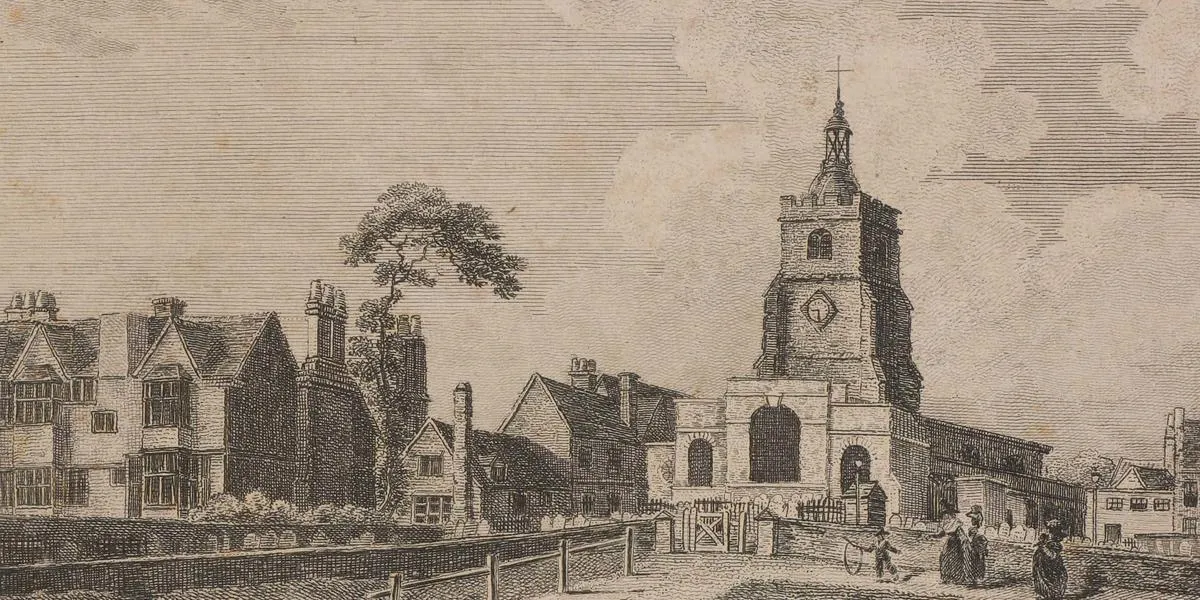Parish registers

1. About this guide
This guide explains how to access the Church of England parish registers held at The London Archives.
We hold baptisms, marriages and burials for most Church of England parishes within the City of London and the former counties of London and Middlesex (apart from parishes in the ancient City of Westminster).
2. Online records
Baptisms (1538 to 1924), marriages (1538 to 1940) and burials (1538 to 2003) can be searched online on Ancestry.co.uk:
Church of England Baptisms, Marriages and Burials, 1538 to 1812
Church of England Births and Baptisms, 1813 to 1924
Church of England Marriages and Banns, 1754 to 1940
Church of England Deaths and Burials, 1813 to 2003
3. Records available only at The London Archives
Baptisms (1925 to present) and marriages (1941 to present) are not available online. Please browse the list of parishes on our catalogue (sort by title and change the results per page to 100) to find out what registers survive for each parish. You could try also try searching the catalogue by keyword(s).
4. Certified baptism certificates
We are able to supply certified baptism certificates. There is a charge for this service. Please contact the team for further information.
5. Information recorded in parish registers
Early baptism, marriage and burial entries were frequently made in a single register with separate sections for each type of entry.
Marriages were entered in a separate register from 1754 and baptisms and burials from 1813.
5.1. Baptism Registers
Before 1813
The information recorded was basic and could vary between parishes but typically included:
- Date of baptism
- Child’s name
- Father’s name (sometimes noted)
- Mother’s name (sometimes noted)
- Address (sometimes noted)
- Father’s occupation (sometimes noted)
From 1813
A new standardised register was introduced following George Rose's Act, 1812. The registers now recorded the following information:
- Date of baptism
- Child’s name
- Parents’ names
- Address (which may just be the name of the parish or street)
- Father’s occupation
- Name of officiating minister
- Date of birth (sometimes noted)
- Godparents’ names (only from mid to late twentieth century)
5.2. Marriage registers
Before 1754
The information recorded was basic and could vary between parishes but typically included:
- Date of marriage
- Names of the bride and groom
- Occupation of the groom (sometimes noted)
1754 to 1837
A new standardised register was introduced following Lord Hardwicke’s Marriage Act of 1753. The registers now recorded the following information:
- Date of marriage
- Names of the bride and groom
- Parishes of residence
- Marital statuses
- Whether married by banns or licence
- Signatures of the bride and groom, the officiating minister and two or more witnesses (those unable to write would make a mark)
- Ages (usually only noted if a person was under 21)
From 1837
On the introduction of civil registration on 1 July 1837 a new type of marriage register was produced. The registers now recorded the following information:
- Date of marriage
- Names of the bride and groom
- Ages (before 1870 the age is frequently given as ‘minor’ or ‘of full age’)
- Addresses (which may just be the name of the parish or street)
- Marital statuses
- Occupations (bride’s occupation was rarely given)
- Names and occupations of both fathers (even if they were deceased)
- Whether married by banns or licence
- Signatures of the bride and groom, the officiating minister and two witnesses (those unable to write would make a mark)
5.3. Burial registers
Before 1813
The information recorded was basic and could vary between parishes but typically included:
- Date of burial
- Name of the deceased
- If the deceased was a child, the father’s name may be given
- If the deceased was a married woman, the husband’s name may be given
From 1813
A new standardised register was introduced following George Rose's Act, 1812. The registers now recorded the following information:
- Date of burial
- Name of the deceased
- Address (which may just be the name of the parish or street)
- Age
- Name of officiating minister
6. Can't find someone in the burial registers?
During the 1850s the overcrowded churchyards and burial grounds of inner London were closed by a series of Acts of Parliament. Consequently, many burial registers for parish churches in inner London stop by 1855 or 1856. Those which continue usually only contain a few entries relating to burials in existing graves or special interments in the church. See our guide on cemetery records for further information.
7. Baptisms, marriages and burials in the City of Westminster
The parish registers for the ancient City of Westminster are held at Westminster Archives and can be searched online on Ancestry.co.uk.